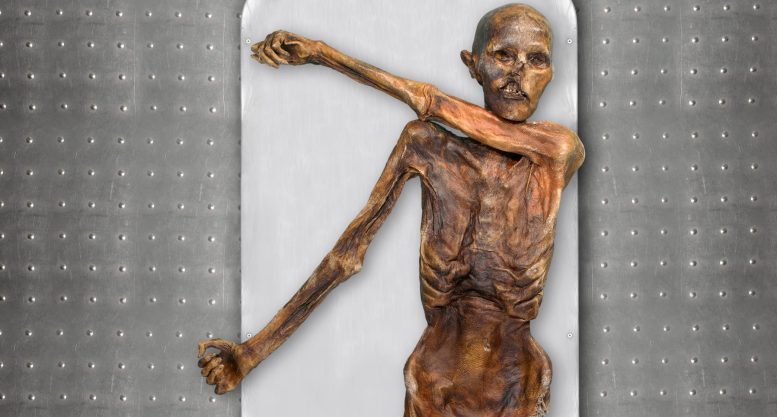
Ötzi, also known as the Iceman, had his genome re-sequenced with advanced technology, revealing that he shared more genes with early Anatolian farmers than other Europeans of his time. Contrary to previous beliefs, Ötzi had advanced hair loss, possibly being bald, and had a notably darker skin tone than was earlier thought. Furthermore, while his genes indicated predispositions to obesity and diabetes, his active lifestyle likely counteracted these genetic tendencies. Credit: South Tyrol Museum of Archaeology/Eurac/Marco Samadelli-Gregor Staschitz
Scientists used advanced sequencing technology to analyze Ötzi’s genome to obtain a more accurate picture of the Iceman’s appearance and genetic origins.
Ötzi’s genome was decoded for the first time more than ten years ago, which was also the first time the genome of a mummy had been sequenced. This sequencing offered pivotal insights into the genetic composition of prehistoric Europeans.
Recent advances in sequencing technology have now enabled a research team from the Max Planck Institute for Evolutionary Anthropology and Eurac Research to reconstruct Ötzi’s genome more accurately. The results of this recent analysis refine the Iceman’s genetic picture.
Compared to other contemporary Europeans, Ötzi’s genome has an unusually high proportion of genes in common with those of early farmers from Anatolia. Additionally, contrary to previous findings, at the time of his death, Ötzi had advanced hair loss and may have even been bald. Moreover, his skin was darker than previously thought. Ötzi’s genes also show a predisposition to diabetes and obesity.
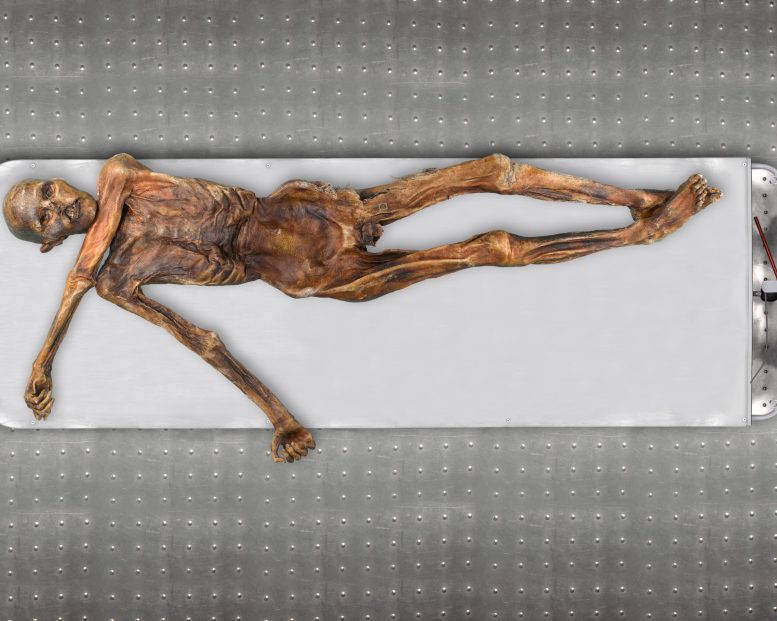
Since 2012, which is when Ötzi’s genome was sequenced for the first time, DNA sequencing technologies have advanced enormously. This new study reveals that compared to other contemporary Europeans, Ötzi’s genome had an unusually high proportion of genes in common with those of early farmers from Anatolia, that his skin was darker than previously thought, and that he was likely bald or had little hair on his head when he died. Credit: South Tyrol Museum of Archaeology/Eurac/Marco Samadelli-Gregor Staschitz
European Genetic Lineage
Present-day Europeans predominantly exhibit a genetic composition that stems from the admixture of three ancestral groups: western hunter-gatherers gradually merged with early farmers who migrated from Anatolia about 8,000 years ago and who were later on joined by Steppe Herders from Eastern Europe, approximately 4,900 years ago.
In the initial analysis of the Iceman’s genome, genetic traces of these Steppe Herders was unveiled. However, the refined new results no longer support this finding. The reason for the inaccuracy is that the original sample had been contaminated with modern DNA. Since that first study, not only have sequencing technologies advanced enormously, but many more genomes of other prehistoric Europeans have been fully decoded, often from skeletal finds. This has made it possible to compare Ötzi’s genetic code with his contemporaries.
The result is that among the hundreds of early European people who lived at the same time as Ötzi and whose genomes are now available, Ötzi’s genome has more ancestry in common with early Anatolian farmers than any of his European counterparts.
Ötzi’s Ancestry and Appearance
The research team posits that the Iceman came from a relatively isolated population that had very little contact with other European groups. “We were very surprised to find no traces of Eastern European Steppe Herders in the most recent analysis of the Iceman genome; the proportion of hunter-gatherer genes in Ötzi’s genome is also very low. Genetically, his ancestors seem to have arrived directly from Anatolia without mixing with hunter gatherer groups,” explains Johannes Krause, head of the Department of Archaeogenetics at the Max Planck Institute for Evolutionary Anthropology in Leipzig, and co-author of the study.
The study also yielded new results about Ötzi’s appearance. His skin type, already determined in the first genome analysis to be Mediterranean-European, was even darker than previously thought.
“It’s the darkest skin tone that has been recorded in contemporary European individuals,” explains anthropologist Albert Zink, study co-author and head of the Eurac Research Institute for Mummy Studies in Bolzano. “It was previously thought that the mummy’s skin had darkened during its preservation in the ice, but presumably what we see now is actually largely Ötzi’s original skin color. Knowing this, of course, is also important for the proper conservation of the mummy.”
Our previous image of Ötzi is also incorrect regarding his hair: as a mature man, he most likely no longer had long, thick hair on his head, but at most a sparse crown of hair. His genes, in fact, show a predisposition to baldness.
“This is a relatively clear result and could also explain why almost no hair was found on the mummy,” says Zink. Genes presenting an increased risk of obesity and type 2 diabetes were also found in Ötzi’s genome, however, these factors probably did not come into play thanks to his healthy lifestyle.
Reference: “High-coverage genome of the Tyrolean Iceman reveals unusually high Anatolian farmer ancestry” by Ke Wang, Kay Prüfer, Ben Krause-Kyora, Ainash Childebayeva, Verena J. Schuenemann, Valentina Coia, Frank Maixner, Albert Zink, Stephan Schiffels and Johannes Krause, 16 August 2023, Cell Genomics.
DOI: 10.1016/j.xgen.2023.100377

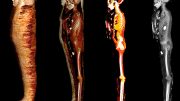


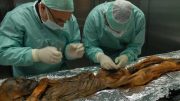

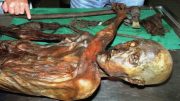
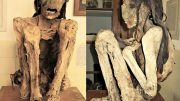
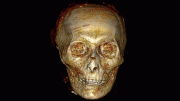
Be the first to comment on "Unlocking the Iceman: Advanced Genetic Analysis of “Ötzi” Reveals Surprising Ancestral Roots and Appearance"